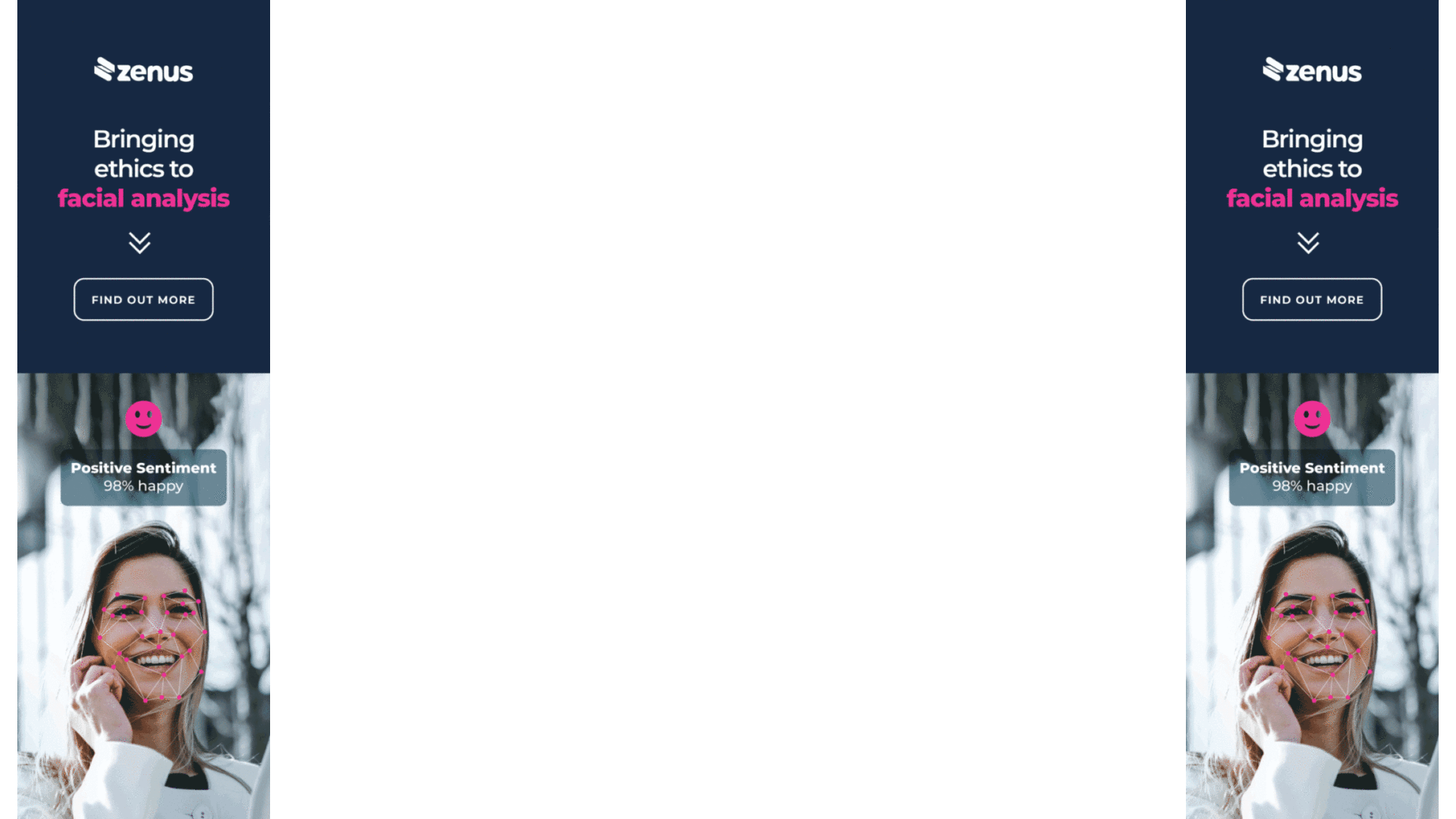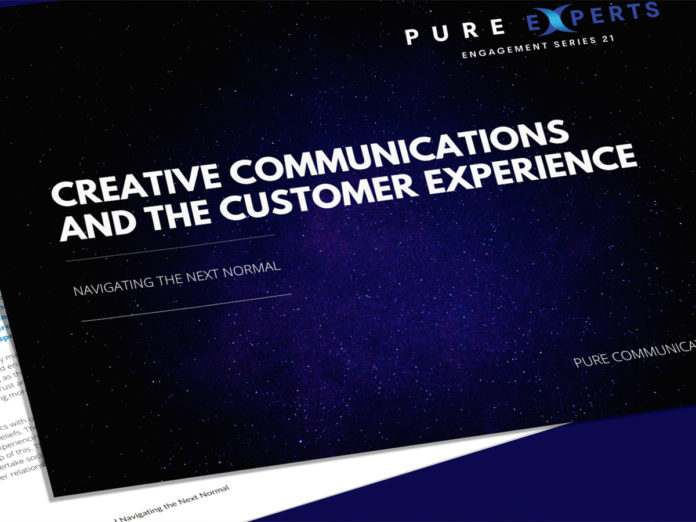Released yesterday, Pure Communications Groups’ Creative Communications and the Customer Experience whitepaper explores how businesses have been forced to re-evaluate how they communicate with their customers. The paper was launched following their highly successful panel session yesterday, where they were joined by experts from stichd, Hearst, Clearleft and a brand engagement consultant. The recording of the session can be watched here.
- In 2020 we finally saw social commerce find its place on the map as the Live Shopping feature launched on Instagram and Facebook and there were whispers of YouTube following suit shortly – all helping to bridge the gap between online and in-person shopping.
- Digital events became increasingly serialised as organisers leveraged the long-term engagement opportunities that the flexibility of virtual provided them. But as people became confined to their home environment disrupting the comms mix, businesses were quickly faced with the challenge of how and where they could engage their audience, navigating this busy online landscape without creating content fatigue.
- Throughout 2020 it was a fight for survival. Digital transformation strategies that were planned over the course of months were deployed in weeks, pre-planned communications strategies became obsolete and traditional methods of connecting with customers were disrupted.
Charlotte Gentry, Founder and CEO of Pure Communications Group and Chair of EVCOM says “2021 will undoubtedly be another pivotal year for the communications industry. Agility and relevancy of content will remain front and centre as our environment continues to adapt around us. More emphasis will be placed on digital transformation to tap into the wealth of analytics we have to guide our customer experiences. And the panic pivot of 2020 will turn into a more permanent redesign of how we communicate with our audiences.”.
Pure Communication Group’s whitepaper identifies six areas that serve as building blocks for a company to ensure they are engaging their employees in a continuously moving landscape.
BRINGING BACK CONFIDENCE: THE YEAR AHEAD FOR EVENTS
The cancellation of events has brought many questions to the forefront for businesses. Will organisations which have realised the costs saved on business travel reduce budgets in this area in the long-term. Will the 2020 cultural shift of companies and individuals becoming more conscious of their environmental impact lead to a hesitancy in moving back from virtual to live? Will businesses struggle to strike the balance between their remote staff’s physical and mental wellbeing challenges and a duty of care around the risks involved with bringing their teams together? As an industry we will have to navigate these new socio-economic pressures which will likely have a longevity well beyond 2021.
REMAINING AGILE WITH A CONTINUALLY SHIFTING COMMS MIX
The communications landscape continued to rapidly shift in 2020 as behaviours and habits adapted and the types of content individuals wanted to consume evolved. Large-scale events took place on gaming platforms, podcast consumption doubled, and video content became an even bigger player in the changing comms mix with the launch of Instagram Reels and the explosion of TikTok. Digital events also became increasingly serialised as organisers leveraged the long-term engagement opportunities that the flexibility of virtual provided them. But as people became confined to their home environment, disrupting the comms mix, businesses were quickly faced with the challenge of how and where they could engage their audience, navigating this busy online landscape without creating content fatigue.
BUILDING YOUR CUSTOMER RELATIONSHIP STRATEGY WITH THE SPEED OF CULTURE
With this constantly moving landscape comes the need for agility and the resolve that even the best laid plans may change. Throughout 2020 it was a fight for survival. Digital transformation strategies that were planned over the course of months were deployed in weeks, pre-planned communications strategies became obsolete and traditional methods of connecting with customers were disrupted. Culturally the environment was continuously changing, forcing companies to address how they were building their customer relationship strategies in this new landscape.
LEVERAGING INFLUENCERS TO BUILD AUTHENTIC AUDIENCE CONNECTIONS
2020 was the year of influencer marketing, with 73% of marketers placing spend away from the more traditional advertising streams. As the pandemic created complexities around large-scale production delivery, influencers became an excellent communications tool for companies who were looking for ideation, production and distribution all in one package. As audiences also increasingly shifted perspectives away from the superficial and more towards authentic and valuable content, companies also looked to deliver influencer marketing strategies to creatively convey more purpose-driven conversations.
EXPERIENTIAL CAMPAIGNS IN THE AGE OF THE DIGITAL BUYER
As the pandemic forced live events and activations to be put on hold, organisers had to rapidly move from physical-first thinking to creative digital solutions. Companies were challenged to recreate face-to-face experiences online, still ensuring they conveyed the correct messaging whilst understanding the emotional needs and new mindsets of their audience. Experiences also shifted to new digital channels, highlighted by Balenciaga releasing their fall 2021 collection via an interactive online video game.
THE RISE OF THE LIVE STREAMED CUSTOMER BUYING EXPERIENCE
While live stream shopping in the UK is still very much in its infancy, the unlimited possibilities of this formula of entertainment mixed with e-commerce are clearly shown in the success of Chinese campaigns. Kim Kardashian sold 15,000 bottles of perfume in minutes when she appeared on the Chinese shopping platform Tmall. Whilst L’Oréal, who cleverly used Chinese influencers at the Cannes Film Festival to showcase which makeup products celebrities had used, sold out of every featured product.
For the UK to follow in Asia’s footsteps, businesses will need to think creatively about the role the store plays in people’s lives and the type of experience that will engage them with their product and brand. Luxury retailers for instance may wish to limit entry to the live stream, shoot pre-recorded video footage and add exclusive elements, giving individuals a highly curated experience from the initial invitation through to post-purchase customer service.
Download the full whitepaper on Creative Communications and the Customer Experience











